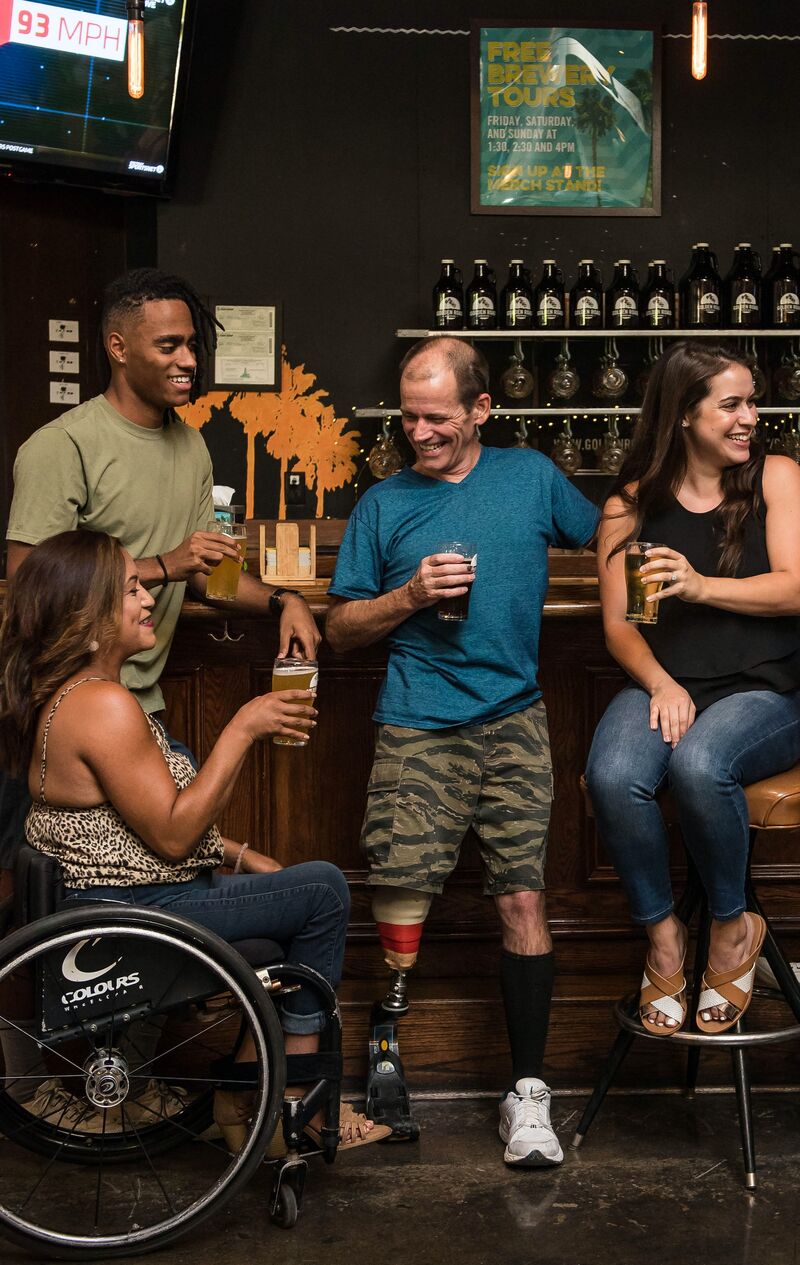
When I’m creating training materials, I like to make sure I’m presenting information multimodally. Not only does this make my trainings more engaging, but it also increases accessibility. Many people have cognitive or learning disabilities that affect how they receive information, so I try to remain mindful and take different learning styles into account. If I’m discussing physical accessibility, I like to incorporate videos demonstrating people using accessible building elements. If time allows, I like to include questions and activities that facilitate interaction. When I’m presenting textual information, I like to accompany it with images.
Recently, I’ve noticed a pattern in stock images. When I search the word “disability” on platforms that store stock images, the results are mostly pictures of people using wheelchairs or other mobility aids, people who have Down syndrome, and people using prostheses. Don’t get me wrong, these pictures are very helpful for disability inclusion and visibility. However, they’ve forced me to challenge both my own and others’ mental picture of disability.
I think the stock image search results are indicative of the fact that when many people think of disability, they first think of disabilities that are immediately obvious. These are also called apparent disabilities or visible disabilities. They become obvious by simply looking at a person. Someone’s disability may be apparent by their physical characteristics or use of assistive devices, or it may be immediately visible by their behaviors. Non-apparent disabilities, on the other hand, are those that are not immediately obvious. Often called hidden or invisible disabilities, non-apparent disabilities are those you may not perceive by simply looking at or talking to a person for a short amount of time.
Non-apparent disabilities are just as real as apparent disabilities and vice versa. They can affect thinking, learning, bodily functions, mobility, and emotional processing just as apparent disabilities can. Examples include diabetes, dyslexia, anxiety, traumatic brain injury, depression, low vision, chronic pain, and many, many more. According to the Centers for Disease Control and Prevention, almost 11 percent of American adults have disabilities that are widely considered non-apparent. This is why it’s important to remember that disability goes so much deeper than what we can see.
It’s safe to assume that you interact daily with someone who has a disability whether or not you know it. This may be a customer, service provider, coworker, or even a loved one. Two people could have the same disability, but it may be apparent for one person and not the other. Someone may have multiple disabilities and experience more limitations from one that is non-apparent than one that is apparent. Disabilities are experienced and manifested differently for everyone. Because of this, always believe that someone’s stated condition is true even if it’s surprising.
Next time you hear the word “disability,” I challenge you to remember that disability looks different for everyone. For many, it may look like using a wheelchair, walker, hearing aid, or prostheses; for many, it may not. Consider if your perception of disabilities includes those that are non-apparent.